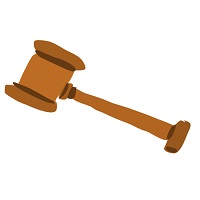What is case law?
Cases, also called opinions or decisions, are court-made law. Courts settle disputes between two or more parties, guided by the law found in the statutory codes, in the regulations, and in similar cases decided by the courts. Cases generally start when one party files a complaint against another party or a prosecutor files a criminal charge with a trial-level court, called “District Courts” in both Iowa and the federal judicial systems.
Not all cases end with trials. In many cases, the parties negotiate an agreement, a settlement, which the court approves, allowing them to avoid an actual trial. When the parties do not agree on settlement terms, the case goes before a trial court judge and sometimes a jury. During the trial, the judge or the judge and jury hear all the arguments, evidence, and witnesses and then issue a decision. Proceedings at the trial level are rarely published so that the public can access them, although a small selection of cases from the Federal District Courts are published and accessible.
Most of the published opinions we can research come from appellate courts. Appellate courts issue decisions in response to requests from parties to review lower court cases. If, during the trial court proceeding, the lawyers or parties believe that the trial court made a mistake and they object and preserve the error, the lawyers or parties can then file an “appeal” to request that the appellate court correct the “error."
Many of the “errors” parties ask the appellate court to correct involve what laws should apply and how the courts should interpret those laws. As a result, appellate court cases tend to focus more on the legal rules of the case, rather than the basic facts of what happened between the parties. Lawyers and courts later research and follow the legal rules these appellate court cases establish. These legal rules are used to resolve later cases involving similar facts and legal issues to help the court-made law, or “common law”, remain consistent.
